Or the object of your desires may be the books of the French romanticists, who flourished so freely in 1830. Or, being a person of large fortune and landed estate, you may collect country histories. Again, your heart may be set on the books illustrated by Eisen, Cochin, and Gravelot, or Stothard and Blake, in the last century. Or you may be so old-fashioned as to care for Aldine classics, and for the books of the Giunta press. In fact, as many as are the species of rare and beautiful books, so many are the species of collectors. There is one sort of men, modest but not unwise in their generations, who buy up the pretty books published in very limited editions by French booksellers, like MM. Lemerre and Jouaust. Already their reprints of Rochefoucauld's first edition, of Beaumarchais, of La Fontaine, of the lyrics attributed to Moliere, and other volumes, are exhausted, and fetch high prices in the market. By a singular caprice, the little volumes of Mr. Thackeray's miscellaneous writings, in yellow paper wrappers (when they are first editions), have become objects of desire, and their old modest price is increased twenty fold. It is not always easy to account for these freaks of fashion; but even in book-collecting there are certain definite laws. "Why do you pay a large price for a dingy, old book," outsiders ask, "when a clean modern reprint can be procured for two or three shillings?" To this question the collector has several replies, which he, at least, finds satisfactory. In the first place, early editions, published during a great author's lifetime, and under his supervision, have authentic texts. The changes in them are the changes that Prior or La Bruyere themselves made and approved. You can study, in these old editions, the alterations in their taste, the history of their minds. The case is the same even with contemporary authors. One likes to have Mr. Tennyson's "Poems, chiefly Lyrical" (London: Effingham Wilson, Royal Exchange, Cornhill, 1830). It is fifty years old, this little book of one hundred and fifty-four pages, this first fruit of a stately tree. In half a century the poet has altered much, and withdrawn much, but already, in 1830, he had found his distinctive note, and his "Mariana" is a masterpiece. "Mariana" is in all the collections, but pieces of which the execution is less certain must be sought only in the old volume of 1830. In the same way "The Strayed Reveller, and other poems, by A." (London: B. Fellowes, Ludgate Street, 1849) contains much that Mr. Matthew Arnold has altered, and this volume, like the suppressed "Empedocles on Etna, and other Poems, by A." (1852), appeals more to the collector than do the new editions which all the world may possess. There are verses, curious in their way, in Mr. Clough's "Ambarvalia" (1849), which you will not find in his posthumous edition, but which "repay perusal." These minutiae of literary history become infinitely more important in the early editions of the great classical writers, and the book-collector may regard his taste as a kind of handmaid of critical science. The preservation of rare books, and the collection of materials for criticism, are the useful functions, then, of book-collecting. But it is not to be denied that the sentimental side of the pursuit gives it most of its charm. Old books are often literary relics, and as dear and sacred to the lover of literature as are relics of another sort to the religious devotee. The ******* likes to see the book in its form as the author knew it. He takes a pious pleasure in the first edition of "Les Precieuses Ridicules," (M.DC.LX.) just as Moliere saw it, when he was fresh in the business of authorship, and wrote "Mon Dieu, qu'un Autheur est neuf, la premiere fois qu'on l'imprime." All editions published during a great man's life have this attraction, and seem to bring us closer to his spirit. Other volumes are relics, as we shall see later, of some famed collector, and there is a certain piety in the care we give to books once dear to Longepierre, or Harley, or d'Hoym, or Buckle, to Madame de Maintenon, or Walpole, to Grolier, or Askew, or De Thou, or Heber.
Such copies should be handed down from worthy owners to owners not unworthy; such servants of literature should never have careless masters. A man may prefer to read for pleasure in a good clear reprint. M. Charpentier's "Montaigne" serves the turn, but it is natural to treasure more "Les Essais de Michel Seigneur de Montaigne," that were printed by Francoise le Febre, of Lyon, in 1595. It is not a beautiful book; the type is small, and rather blunt, but William Drummond of Hawthornden has written on the title-page his name and his device, Cipresso e Palma. There are a dozen modern editions of Moliere more easily read than the four little volumes of Wetstein (Amsterdam, 1698), but these contain reduced copies of the original illustrations, and here you see Arnolphe and Agnes in their habits as they lived, Moliere and Mdlle. de Brie as the public of Paris beheld them more than two hundred years ago.
Suckling's "Fragmenta Aurea" contain a good deal of dross, and most of the gold has been gathered into Miscellanies, but the original edition of 1646, "after his own copies," with the portrait of the jolly cavalier who died aetatis suae 28, has its own allurement.
Theocritus is more easily read, perhaps, in Wordsworth's edition, or Ziegler's; but that which Zacharias Calliergi printed in Rome (1516), with an excommunication from Leo X. against infringement of copyright, will always be a beautiful and desirable book, especially when bound by Derome. The gist of the pious Prince Conti's strictures on the wickedness of comedy may be read in various literary histories, but it is natural to like his "Traite de la Comedie selon la tradition de l'Eglise, Tiree des Conciles et des saints Peres," published by Lovys Billaine in 1660, especially when the tract is a clean copy, arrayed in a decorous black morocco.















